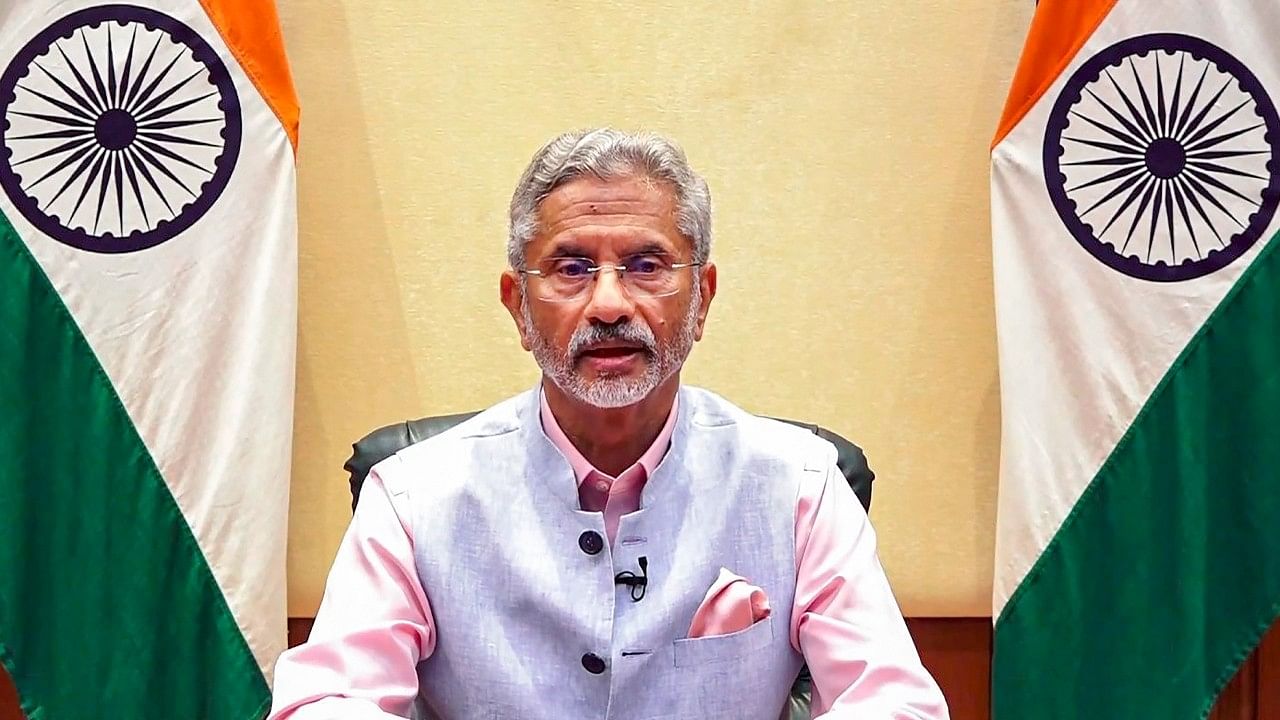
S Jaishankar
Credit: PTI Photo
The erstwhile regimes of India left the areas near the country’s disputed boundary with China undeveloped in order to deter military aggression by the neighbouring communist nation, External Affairs Minister S Jaishankar said on Monday, adding that Prime Minister Narendra Modi got rid the “wrong policy” of the previous governments.
Jaishankar said that the Modi government had been focussing on developing infrastructure along the Line of Actual Control (LAC) – the de facto boundary between the two nations – since 2014 and that was why it had been possible to mobilize the Indian Army troops for forward deployment in response to the aggressive moves by the Chinese People’s Liberation Army aggressive moves in eastern Ladakh in April-May 2020.
He told journalists in New Delhi that India would not only go on building bridges and roads on its territory along the LAC but also continue to strive to provide adequate facilities to its people living in the border villages – notwithstanding objections from China, which had already upgraded infrastructure on its side of the disputed boundary.
“The big effort in respect of China has been to push our (India’s) border infrastructure much stronger than what we used to have,” said Jaishankar. “If you ask whether after 2014, the Indian military and the Indian Air Force are able to deploy and counter any Chinese movement better, yes, absolutely.”
He said that the budgetary allocation for the Border Roads Organisation (BRO) had been increased almost four times after the BJP-led government had taken over – from Rs 3782 crore in 2013-14 to Rs 14,387 crore in 2023-24. The government had built 6806 kilometres of roads in the eight years between 2014 and 2022, compared to 3610 kilometres between 2008 and 2014. The length of bridges constructed had increased to 22,439 metres during 2014-22, compared to 7270 metres between 2008-14.
“The capability was growing year after year,” said the external affairs minister.
Five tunnels have been completed in the last three years to upgrade road connectivity in the border areas, while 10 are ongoing and seven are under planning. The key tunnels include the 9.02 km Atal Tunnel that provides all-year connectivity to Lahaul-Spiti Valley, which was completed in 2020, and Sela Tunnel which is nearing completion in Arunachal Pradesh, he cited.
“These developments on the ground, in a way, are going to determine the quality of our response to a national security challenge on the northern border,” Jaishankar said, underlining that the development of border infrastructure made India better prepared to deal with any threat from China.
He said that a frontier highway of about 1800 km length was being made in Arunachal Pradesh that would facilitate inter-valley connectivity and have a significant impact on both internal and border connectivity.
The faster construction of bridges, the use of better road construction technology, and assigning work on EPC (engineering, procurement and construction) mode have been responsible for greatly improved delivery. “The increased budgeting, faster construction, newer technology and speedier clearances reflect the Modi Government’s commitment to secure our borders. It may be contrasted with the situation earlier,” said Jaishankar.
